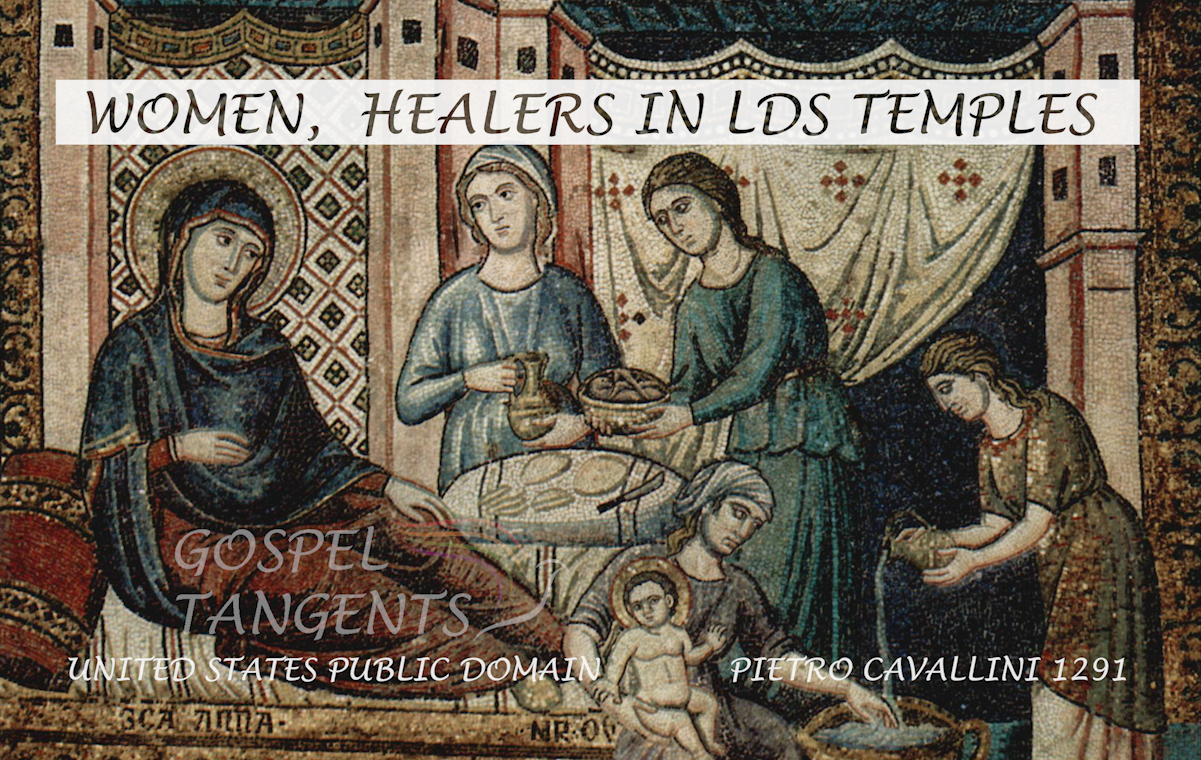In the 19th and early 20th century, there are many examples Mormon women healers. These women used to lay hands on the sick. By what power did they do this?
GT: I remember as a priest growing up and having the lesson over and over: priesthood is the power to act in the name of God.
Jonathan: Okay.
GT: Okay.
Jonathan: That is a common definition.
GT: A common definition. So, what I heard you say was that women in the 1800s especially, but even into the 20th century, healed both men and women, probably more women than men, but it happened with both genders. They healed by the power of God. But it’s a mistake to call that priesthood. Is that correct?
Jonathan: Yeah. So, using today’s definitions to describe historical practice doesn’t work.
GT: Okay.
Jonathan: It just doesn’t work.
GT: So, it’s hard to talk about then.
Jonathan: So it’s consequently challenging. Right? So, well then how do we talk about it?
Honestly, this was a fun and challenging conversation. Stapley says that the term “priesthood” used today, while a definition is “the power of God”, priesthood also implies ecclesiastical authority. Women can freely utilize “the power of God,” but since they don’t have ecclesiastical authority, it is a mistake to call the healing blessings they did “priesthood.” For me, the terms “power of God” and “priesthood” were so synonymous, that I didn’t understand the distinction Stapley was making. Check out how Jonathan clears up my misunderstanding.
He also gives us more information on baptisms for health, and temple healers. I was not familiar with temple healers. It turns out that women often fulfilled this (now defunct) practice of a temple healer.
Jonathan: There are examples of people being baptized in the Kirtland era and being healed upon their baptism, but an actual healing ritual, a designated ritual, baptism for health occurs in Nauvoo. It’s designed to be, I think it envisioned as part of the temple. So, the temple is a place for healing, specifically Joseph Smith envisions it as a place where the sick would come and not only receive an endowment of power and create heaven, but also be physically healed. Baptism for health was an integral piece of that healing liturgy, but it is immediately and ubiquitously performed outside of the temple.
So in the rivers and wherever the Latter-day Saints go from that point forward, baptisms for health are common. As soon as the temples are built, there are regular days for baptisms for health. So, if you’re feeling unwell, you could make a pilgrimage to the temple. One of the temple healers could baptize you for your health.
GT: In the temple?
Jonathan: In the temple, and they kept records. In fact, the single most common temple ritual for many years in the 1880s was baptism for health. So there was more baptisms for health for the living. I should qualify that. The most common ritual for the living in the temples was baptism for health.
 Early Mormon women anointed with oil and laid hands on the sick to heal.
Early Mormon women anointed with oil and laid hands on the sick to heal.
You should also check out our previous conversation where we talk about “cosmological priesthood.” Check out our conversation…..
[paypal-donation]
Podcast: Play in new window | Download (Duration: 16:39 — 15.3MB) | Embed
Subscribe: Email | | More
